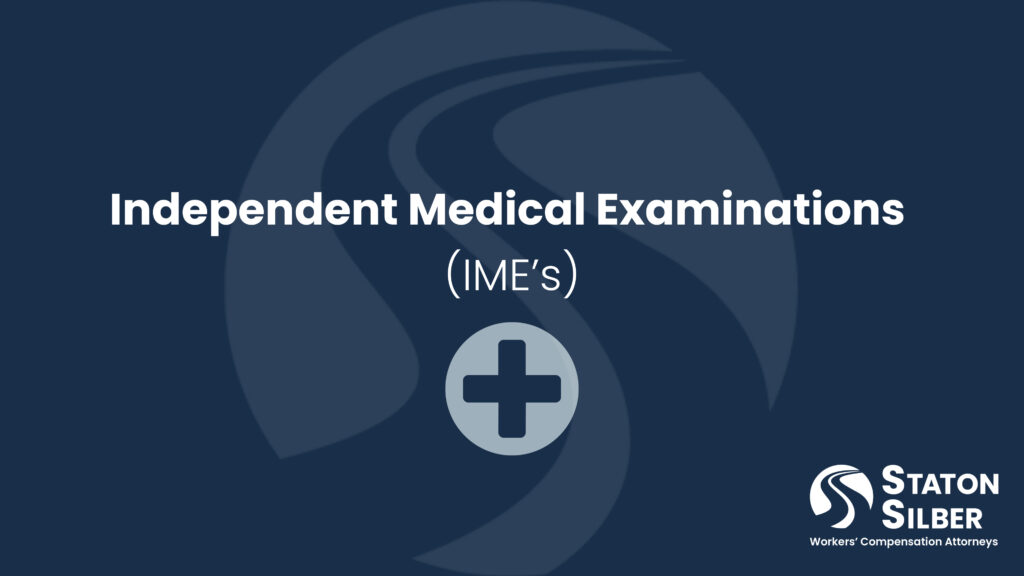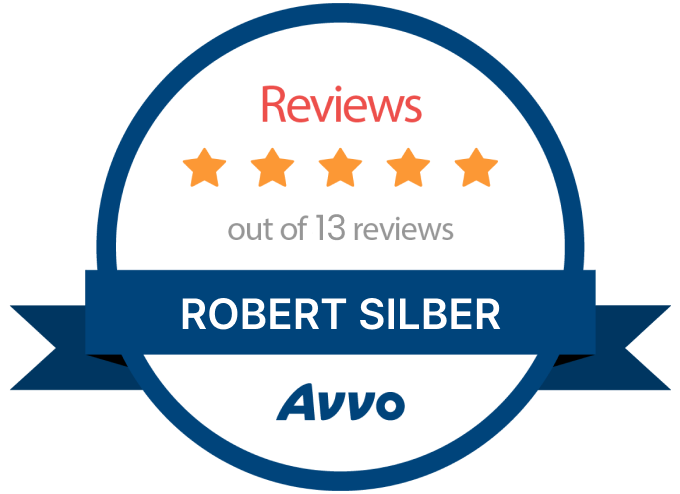- What Is an Independent Medical Examination, When Can It Be Ordered, and Should You Be Concerned?
The Industrial Insurance Act, specifically, RCW 51.36.070, allows the Department of Labor and Industries, or a self-insured employer, if applicable, to schedule a medical examination with a physician of their choosing. An injured worker does not have any choice of doctors who do the examination.
There are some protections for injured workers, however. By law, an IME may only be ordered for the following reasons:
- To determine claim claim allowance or reopening;
- To resolve a new medical issue, an appeal, or case progress; and/or
- To evaluate the worker’s permanent disability or work restriction.
The Department or self-insured employer may require the worker to see multiple doctors from different specialities at separate times. For instance, an injured worker with a foot injury may be examined by an orthopedic surgeon, neurologist, and podiatrist, and even a physical medicine and rehabilitation specialist and rheumatologist. If the worker believes the injury has caused or aggravated a mental health condition such as anxiety or depression, an examination with a psychiatrist may be ordered, too.
Once the examination takes place to address the stated purpose of the exam, the Department or self-insured employer are prohibited from scheduling another examination fast on the heels of the first exam. In other words, the Department or employer cannot take another bite of the apple right after the first IME except under rare circumstances.
The truth of the matter is the Department and self-insured employers routinely use IMEs as a tool to significantly reduce or even terminate workers’ compensation benefits. A niche industry of IME providers has emerged, with a small number of businesses employing specific physicians to conduct these exams, who are generously compensated for their time and medical opinions. Obviously, these physicians are financially motivated to provide opinions that favor L&I and employers to ensure repeat business.
One common mistake injured workers make is assuming IMEs are routine and harmless, believing they will lead to approval for treatment and monetary benefits like time loss compensation. In fact, IMEs can – and often do – jeopardize claims. For this reason, it is crucial for workers to either avoid IMEs when possible or ensure the Department or self-insured employer strictly adheres to rules, which are designed to protect workers from unfair practices.
2. Independent Medical Examination Notice Requirements
The Department and self-insured employers are required to give injured workers at least 14 days WRITTEN notice of examinations before they take place. This notice typically comes in the form of a letter and must include the date, time, and location of the exam, and the name of the doctor or organization conducting it. Equally important, the notice must include the purpose of the exam. If the purpose is not included, the notice is invalid and, arguably, the injured worker is not required to attend the appointment.
The location of the IME must be “reasonably convenient” for the injured worker. If not, the Department or self-insured employer may opt for a telemedicine exam, provided it is considered appropriate.
Significantly, the Department or self-insured employer is only permitted to schedule exams with “a medical care provider licensed to practice medicine, osteopathy, podiatry, chiropractic, dentistry, or psychiatry.” For example, they cannot arrange an exam with a licensed clinical psychologist for the purpose of completing a neuropsychological or cognitive evaluation. If a worker receives notice of such an evaluation, they are not legally required to attend!
3. An Injured Worker’s Right to Record the Exam and What to Do When an IME Notice Is Received
The law now allows injured workers to record the audio or video (or both) of their examinations. This is an important protection injured workers should utilize. It is not uncommon for IME examiners to include details in their reports about physical tests they never conducted or omit important, sometimes favorable, information they discussed with the worker. Recording these exams helps prevent dishonest practices by IME examiners.
To exercise their right to record the audio or video (or both) of an IME, the worker or their attorney must provide written notice to the entity scheduling the examination at least seven days prior to the exam date that the exam will be recorded. The worker bears the cost of the recording. The worker should bring a witness to the exam, who can do the audio or video recording. A witness is permitted to accompany the worker to any IME except a psychiatric IME.
The worker or the worker’s attorney should fax the notice of intent to record to the IME organization and retain the fax confirmation sheet as proof, in case the organization claims it did not receive the notice and attempts to block the recording.
Importantly, workers are not legally required to allow IME examiners to themselves record the examination. While it has become common practice for IME examiners to agree to recording as long as they can also record, it is strongly recommended not to allow the IME provider to do so. In many instances, IME examiners refuse to allow a one-sided recording, which would result in the IME being canceled – allowing the injured worker to avoid the inherent dangers of the IME process.
- Helpful Tips for Your IME
Here are some suggestions for how an injured worker should conduct themselves during the examination.
- Be Honest and Do Not Exaggerate Your Injuries! The physician will have your medical records, and any attempt to hide prior injuries or overstate current ones can damage your credibility once the truth is discovered.
- Cooperate with the examiner, but keep in mind the physician is not there to provide treatment or to support your claim. Be polite and courteous. Do not argue or become combative with the doctor. You will not win.
- Be appropriately clean and dressed. Avoid wearing clothes that might suggest to the doctor you have been participating in activities beyond your reported physical limitations.
- Do not be afraid to admit if something does not cause pain or if past treatments have helped. This will enhance your credibility. If you report that every test causes pain, the doctor may suspect you are exaggerating your symptoms or injuries. Acknowledging that a past treatment offered relief, even if only temporary, supports the validity of your injury.
- Give an accurate accounting of what caused your injury. Any inconsistency with your prior descriptions, deposition testimony, and medical records can damage your credibility.
- Be mindful of your physical and verbal behavior during the exam. Reacting dramatically, such as grimacing or flinching at every part of the exam, can make your complaints seem less credible to the doctor.
- Be brief but thorough with your answers. For example, if the doctor asks how your injury has impacted your daily life, you can mention you are no longer able to play with your children like before, providing specific examples. However, avoid unrelated details, like listing the names and ages of your children.
- Explain to the doctor that your ultimate goal is to regain your health, return to your prior level of functioning, go back to work, and be free of pain. Telling the doctor you want a pension will not get you a pension.
- Be aware of physical tests, called Waddell’s Tests, the examiner may use to detect signs of faking or malingering. These tests are often applied to individuals with back injuries to assess whether reported pain has no physical cause and might be exaggerated or psychologically driven.
Here are specific examples of Waddell’s Tests:
i. Tenderness Test: The doctor examines specific areas for tenderness related to the injury. The test is considered “failed” if pain is reported inappropriately, such as:
- Pain over a broad area when the doctor gently touches the lower back.
- Deep, non-localized pain that spreads beyond the injured area, often to the upper back or pelvic region.
ii. Simulation Test: The doctor moves a body part in a way that should not cause much pain, but the worker reports severe discomfort. Common examples include:
- Cervical axial loading: The doctor presses down on the top of the worker’s head and asks if it increases low back pain, which it should not.
- Simulated rotation: The doctor rotates the entire body without twisting the back, asking if it causes low back pain, which it should not.
iii. Distraction Test: The doctor repeats a previous test without the worker’s awareness, typically by:
- Observing the worker walking in or out of the exam room.
- Repeating a straight leg raise test, which checks for spinal injury. If the worker reports pain when lying down but not when seated (even though both positions should trigger the same pain), this is considered a failed test.
iv. Exaggerated Body Pain Test: This test assesses pain in areas where it should not occur based on the anatomy:
- Weakness test: The doctor looks for pain or weakness in parts of the body not related to the damaged nerve.
- Sensory test: The doctor uses a pin to check for pain in areas that should not be affected by the nerve injury, based on the location of the damaged disc.
v. Over-reaction Test: The doctor checks for exaggerated pain responses, such as sighing, grimacing, or limping in a way that does not match the severity of the spinal injury shown on MRI.
The way to overcome Waddell Testing? DO NOT LIE ABOUT PAIN OR WEAKNESS WHEN BEING EXAMINED BY A PHYSICIAN.
5. What Should You Do After the IME?
After the IME, the examiner will prepare a lengthy report containing a summary of the injured worker’s medical history, their examination findings, and diagnoses, and responses to specific questions from the Department of Labor and Industries or self-insured employer, if applicable. The IME organization will send this report to L&I or the self-insured employer but not directly to the injured worker.
In most cases, the Department of Labor and Industries, or self-insured employer, will forward the IME report to the injured worker’s attending physician with a request for either concurrence (i.e., agreement) with the IME conclusions or, if they disagree, to provide a detailed narrative report explaining why. However, most treating doctors lack the time to prepare lengthy narrative reports, especially when they do not receive adequate compensation. As a result, they often either agree with the IME conclusions or ignore the request altogether, which is treated as concurrence. Needless to say, this is a death knell for a claim.
To avert such disaster, it is crucial to obtain the IME report from L&I or self-insured employer as soon as it is available. This typically takes two to four weeks (sometimes longer) after the exam. Schedule a meeting with your attending physician to go over the IME findings and conclusions and ask them to write a letter to the Department explaining why they disagree with the IME conclusions. Be sure to follow up with your doctor to ensure the letter is written and sent to the Department or self-insured employer.
The law requires the Department and self-insured employers to give the attending physician’s opinion “special consideration”; therefore, making sure your attending physician provides their opinion to the Department or self-insured employer is of utmost importance.
Once the Department of Labor and Industries or self-insured employer has your attending physician’s disagreement with the IME report, be sure to follow up with the Department claims manager or self-insurer with a request to authorize treatment or pay benefits based upon your attending physician’s medical support.
6. However You Decide to Proceed, First, Talk to an Attorney!
Whether you choose to handle your claim independently or seek legal assistance, it is highly advisable to consult with an attorney upon receiving notice of an IME. This will help you obtain crucial information and guidance about an IME threat tailored to your case. At Staton Silber, P.S., we offer free case consultations and encourage you to reach out.






